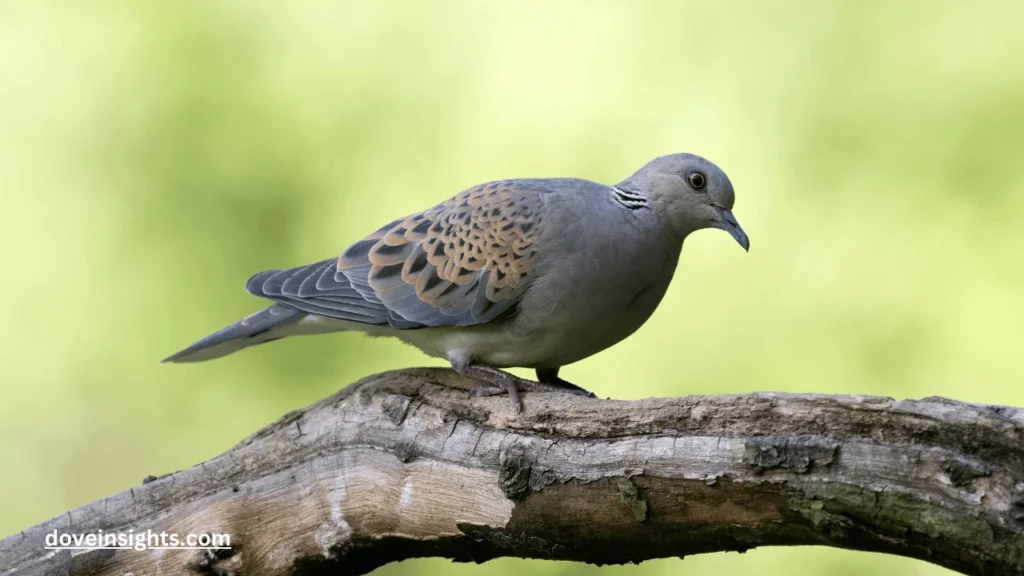When you think of doves, you might picture them perched on tree branches, cooing peacefully. But what if I told you that doves sometimes nest on the ground?
It might surprise you to learn that, while many dove species are known for their high perches, some are actually ground-nesters. This fascinating behavior challenges what we typically expect from birds that are often associated with peace and tranquility.
The question of whether doves nest on the ground is more significant than it may seem—it invites us to consider the diverse behaviors of these birds and the impact of their nesting habits on their survival and reproduction.
In this article, we will explore the different types of dove species, their nesting habits, and how environmental factors influence where and how they choose to nest.
Contents
Overview of Dove Species and Their Nesting Habits
Doves belong to the Columbidae family, and they are found all over the world. While the mourning dove, rock pigeon, and common wood pigeon are some of the most well-known species, not all doves share the same nesting preferences.
Most doves prefer to nest in trees, shrubs, or high locations to avoid predators. For example, the mourning dove typically builds its nest in low trees or bushes. However, there are some dove species that have adapted to nesting closer to the ground, especially in open fields or woodlands.
Ground nesting is not common among doves, but it is still a possibility depending on the species and environment. The choice of nesting site is often determined by factors such as predator pressure, food availability, and the bird’s natural habitat.
While some doves are known for being more adaptable in choosing nest sites, others remain more cautious and select elevated locations for better protection.
Why Do Some Doves Nest on the Ground?
The idea of a dove nesting on the ground may seem unusual, especially considering their delicate nature. However, ground nesting can offer certain advantages in specific environments.
Doves that nest on the ground might do so because of the availability of resources in lowland areas, such as abundant grass and seeds. For species living in open fields or savannas, nesting on the ground can make it easier for them to forage for food and raise their young in a habitat that suits their needs.
Additionally, some ground-nesting doves might choose this option because the lack of predators in certain areas makes the ground a safer place. In areas where trees or shrubs are sparse, the ground can provide shelter, while in other cases, the dense foliage on the ground offers camouflage.
Environmental factors such as climate and terrain also play a key role in where doves choose to build their nests.
Ground-Nesting Doves: The Species and Their Adaptations
Not all dove species are inclined to nest on the ground, but a few are adapted to this behavior. For example, the white-winged dove and the ground dove are known for nesting close to the ground in regions with dry conditions.
These species have evolved to thrive in environments where traditional tree nesting would not be viable. Their nesting strategies are different from tree-nesting doves, as they have adapted to the low-hanging bushes or open spaces of the ground.
Ground-nesting doves usually build simple nests made of twigs, grass, and other natural materials. They may also rely on the vegetation around them to form a more concealed or secure nesting area.
By nesting on the ground, these species gain the advantage of building nests in environments that other doves may avoid, allowing them to access food and shelter that would otherwise be out of reach.
Risks of Ground Nesting for Doves
While ground nesting offers certain benefits, it also comes with increased risks. Doves that nest on the ground are much more vulnerable to predation.
Animals such as raccoons, foxes, and domestic pets like cats can easily find ground nests. Moreover, the exposure to human activity in suburban or agricultural areas can pose a threat to the survival of ground-nesting dove species.
In addition to predators, weather conditions such as heavy rainfall, high winds, or extreme temperatures can disrupt ground nests. These environmental hazards may cause nest damage or force the parent doves to abandon their young.
Ground nests are also more susceptible to being destroyed by humans, especially in areas where agricultural equipment is used.
How to Protect Ground-Nesting Doves

If you encounter ground-nesting doves or wish to help protect them, it’s essential to consider how we can minimize risks. One of the most important steps is ensuring that wildlife and pets do not disturb these delicate nests.
Establishing wildlife-friendly spaces, such as designated bird habitats or no-pet zones, can reduce the risk of predation. Additionally, keeping the surrounding area free from disruptions like loud noises or human activity can help prevent abandonment.
Another way to protect ground-nesting doves is through habitat conservation. By maintaining native plants and natural vegetation, we can create safer environments for doves to nest in.
Implementing sustainable farming practices can also help provide doves with safer areas to nest while ensuring that food sources remain abundant.
Conclusion:
While many doves choose higher, more secure locations for nesting, some species have adapted to nesting on the ground.
This unique behavior can offer survival advantages in specific environments, especially when resources are abundant and predators are few. However, ground nesting also exposes doves to several challenges, from predation to environmental hazards.
By understanding the dynamics of ground nesting in doves, we can better appreciate the complexities of these birds’ reproductive strategies and take steps to protect them in their natural habitats.
Ultimately, whether nesting in trees or on the ground, doves continue to captivate us with their ability to adapt to diverse environments.
FAQ’s
Do all doves nest on the ground?
No, most doves prefer nesting in trees or shrubs, but some species, like the ground dove and white-winged dove, are known to nest on the ground.
Why do some doves choose to nest on the ground?
Ground nesting provides certain advantages, such as access to food in open fields and potential protection from predators in areas with dense ground cover.
Are ground-nesting doves more vulnerable to predators?
Yes, ground-nesting doves are at a higher risk of predation from animals like cats, foxes, and raccoons.
How can we protect ground-nesting doves?
Protecting ground-nesting doves involves minimizing human disturbance, protecting their natural habitats, and keeping pets away from nesting areas.
What species of doves nest on the ground?
Species like the white-winged dove and ground dove are more likely to nest on the ground, especially in regions with sparse trees or shrubs.
How do ground-nesting doves build their nests?
Ground-nesting doves typically build simple nests from twigs, grass, and other natural materials found nearby.








